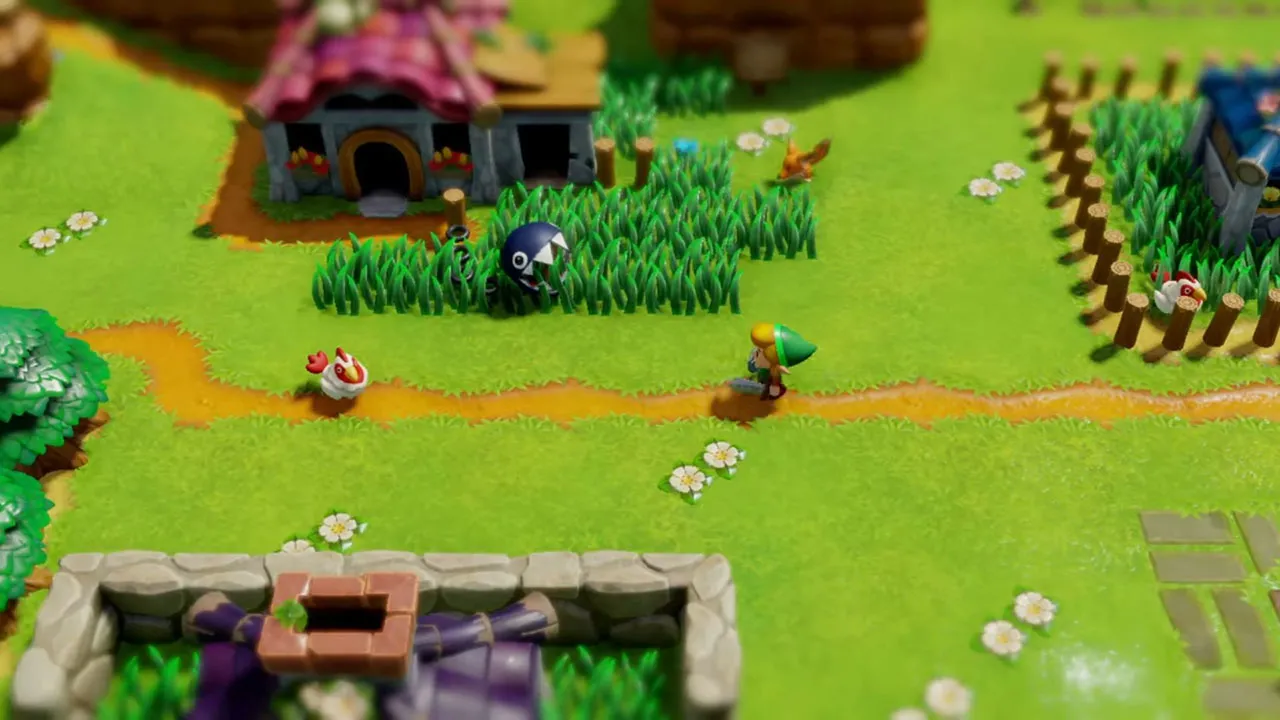
The Legend of Zelda: Link’s Awakening – A Timeless Classic Reimagined
Nintendo, synonymous with the iconic Mario, boasts a rich library of legendary franchises. Alongside Pokemon, Kirby, Donkey Kong, and Fire Emblem, sits another gem: The Legend of Zelda. While perhaps catering to a specific audience, its success is undeniable. The Legend of Zelda: Breath of the Wild, the Nintendo Switch’s launch title, ushered in a new era for the franchise and gaming alike. Its revolutionary gameplay redefined the series, but this doesn’t diminish the legacy of past Zelda titles. As if to emphasize this point, Nintendo surprised fans at E3 2018 with the announcement of a remake of the Game Boy Color classic, Link’s Awakening. Initial glimpses promised a substantial transformation, breathing new life into a 20-year-old game. Released on September 20, 2019, The Legend of Zelda: Link’s Awakening for the Switch resonated with both nostalgic veterans and curious newcomers. But what fuels this success? Let’s delve into a comprehensive review.
A Wealth of Worthy Upgrades
Link’s Awakening sees our hero adrift from Hyrule and Ganon’s clutches, landing on Koholint Island – a place existing solely within the dream of the Wind Fish. To awaken the Wind Fish and escape, Link must defeat eight Nightmares and collect eight musical instruments to play a special melody. The 2019 remake retains the classic gameplay and puzzle-solving logic of the original Game Boy Color release. Progress often requires specific equipment to overcome obstacles like pits or boulders, obtained by completing dungeons in a set order. This structure contrasts with the open-world exploration of A Link Between Worlds or Breath of the Wild. However, Nintendo has thoughtfully integrated several enhancements to modernize this classic experience. Priced at $59.99, Link’s Awakening offers substantial value.
 Link
Link
Firstly, button mapping has been significantly improved. The Game Boy Color version limited equipment to two buttons (A and B), often forcing players to prioritize the sword and shield. This limitation was understandable given the Game Boy Color’s simple button layout. The Switch, however, offers a plethora of buttons, allowing Link’s Awakening to integrate equipment like the sword, Power Bracelet, and Pegasus Boots as passive abilities, accessible without switching. This streamlines gameplay and eliminates constant equipment changes, providing a much smoother experience.
Secondly, movement has been enhanced. The original game restricted movement to four directions due to the D-Pad. Link’s Awakening on the Switch features a 2.5D perspective with full analog stick support, enabling 360-degree movement for both Link and enemies. This adds depth to combat, allowing for more dynamic dodges and attacks.
 Link
Link
Mini-games also received a welcome overhaul. The crane game, for example, now features 3D physics, adding complexity to grabbing items with the four-pronged claw. Failed attempts and dropped prizes due to centrifugal force provide humorous moments.
Finally, perhaps the most significant addition is the Chamber Dungeon maker. After completing a main dungeon, players acquire its layout components for use in Dampé’s Chamber Dungeon. With designated start and end points (boss rooms) and varying door orientations, players can create unique dungeon layouts to challenge themselves and others.
 Link
Link
Visually Stunning and Unique
“Beautiful graphics” in gaming often evokes thoughts of realistic character designs from Square Enix or cinematic cutscenes from Blizzard. As technology advances, there’s a tendency to equate visual appeal with realism. However, video games are a creative medium and shouldn’t be confined to such standards. Nintendo consistently charts its own course, as evident in Link’s Awakening.
Past Zelda titles on consoles like the GameCube and Wii embraced 3D graphics with varying styles. Wind Waker HD on the Wii U and Breath of the Wild on the Switch offered visually stunning experiences firmly rooted in artistic vision. Link’s Awakening takes another unique approach, reimagining Koholint Island with a fresh, vibrant aesthetic.
 Link
Link
Adopting a “chibi” art style (1:1 head-to-body ratio), characters, enemies, and bosses alike possess a charming, whimsical appearance. This, combined with a vibrant color palette, creates an enchanting visual experience. From the peaceful Mabe Village and lush green plains to dimly lit caves and uniquely styled dungeons, every environment is meticulously crafted. Every blade of grass, rock, and wall contributes to Link’s Awakening’s distinct visual identity.
 Link
Link
The game’s 3D models, combined with a slightly tilted top-down perspective, offer a fresh and innovative visual experience. Link’s expressive animations and the quirky movements of enemies further immerse players in this captivating world.
Conclusion
The Legend of Zelda: Link’s Awakening successfully reimagines a classic for a modern audience. By retaining the core gameplay while implementing thoughtful enhancements and a unique art style, Nintendo delivers a truly special experience. Whether you’re revisiting Koholint Island or experiencing it for the first time, Link’s Awakening is a must-play for any Switch owner.
 Link
Link
(Technical specifications, provided in the original article, are often unnecessary for English-language reviews and can be omitted for conciseness and relevance. I have therefore omitted them in this revised version.)





Comments (0)